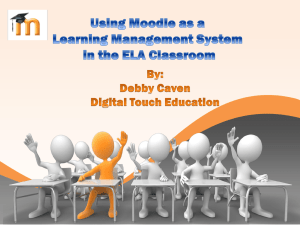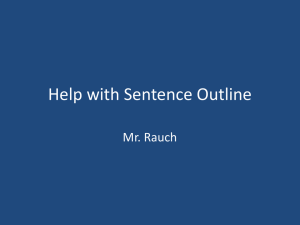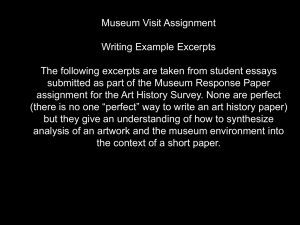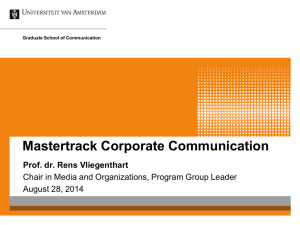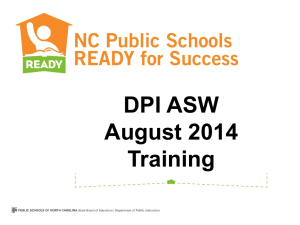Law Research Writing Dr V Patkar
advertisement
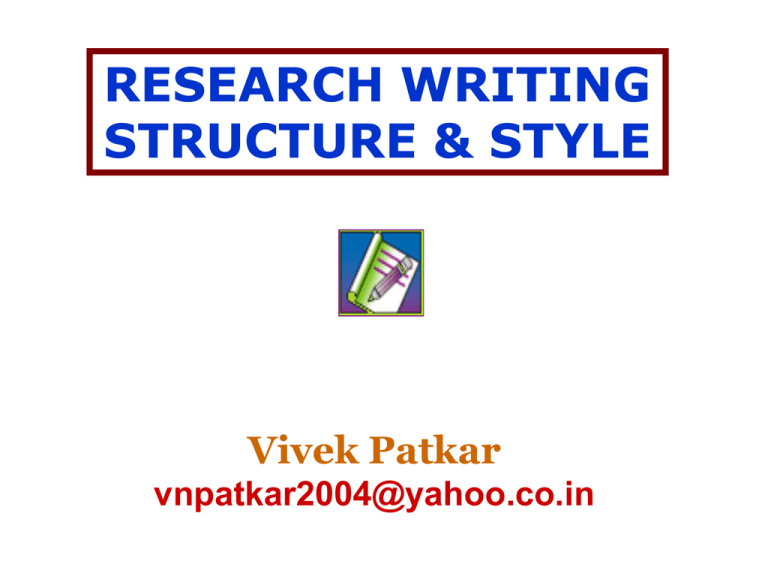
RESEARCH WRITING
STRUCTURE & STYLE
Vivek Patkar
vnpatkar2004@yahoo.co.in
Research Process
S-8
Disseminate the Results
S-7
Prepare the Research Report
Writing:
S-4
S-7
S-8
S-6
Analyse, Interpret Data & Validate
S-5
Gather the Data
Approval
S-4
Prepare a Research Plan
Research Proposal
S-3
Select the Research Strategy
S-2
Establish Research Questions
S-1
Identify the Research Problem
Preliminary
Research
Activities
Presentation Plan
Research Proposal Writing
Academic Thesis Structure
Writing Guidelines
Bibliographic Styles
Research Paper Writing
Publication Process
Good Research
Research Proposal Purpose
• A research proposal is an argument that
explains the logic of the study to an
audience of non-experts.
• An explanation refers to the justification
of the research.
• A proposal refers to the subject matter
of the study.
• Term non-experts refers to readers who
may not be knowledgeable in the
specific area of the proposed study.
Three functions: intention, specificity, and adequacy of methods
Research Proposal Features
• It shows how does the proposed research
study has considered the available knowledge
through literature and is informed by it
• Viability and relevance of research is justified
• Strengths and limitations of the approach are
clearly stated
• All the ethical issues are weighed up
• Shows that fair amount of original findings
are expected at the end of the research
- A research proposal be around 8000 words in length
- A pilot study-based research proposal is most welcome
Elements of Research Proposal
Summary &
Contents
Research
Design
Problem
Statement
Data
Analysis
Research
Objectives
Form of
Results
Literature
Review
Personnel &
Internal
Resources
Importance
of Study
Budget
Schedule
Facilities
Study
Management
Bibliography
Appendices
Special
Requirements
Notes: 1) Activities listed in the red are considered essential.
2) Activities listed in the green are necessary for funding submission.
3) Title of the Ph.D. Thesis is usually frozen on proposal approval.
Literature Review
Purpose:
Distinguishing what has been done from what
needs to be done
Discovering important variables relevant to the
topic
Synthesising and gaining a new perspective
Identifying relationship between ideas and
practices
Establishing the context of the topic or problem
Rationalising the significance of the problem
Identifying the main methodologies and
research techniques that have been used
Model for a Proposal
• Introduction
• Research Problem
(a) Existing literature, (b) Gaps in the existing research
• Purpose of the Study
• Research Questions
• Methods and Procedures
(a) Available methods & justification for the chosen one
(b) Research strategy
(c) Research design – sample size & selection procedure
(d) Methods of data collection
(e) Methods of data analysis and quality issues
Model for a Proposal (2)
• Ethical Issues
• Expected Results
• Significance, relevance and practical
implications of the study
• Chapter scheme
• Preliminary pilot findings, earlier research
• Timeline or schedule
• Proposed budget
• A preliminary list of references
A Study Schedule
Duration
Activity
2 Months 2 Months
Topic Selection
Literature Search
Literature Review
Data Collection
Data Analysis
Interpretation &
Validation
Report Writing
Research
Proposal
2 Months
2 Months
2 Months
General Guidelines
¶ Try to make the design of the study and
methods as explicit, clear and detailed as
possible
¶ Research questions and corresponding
hypotheses should be well articulated with
suitable description
¶ Implications of the research should be placed
in their academic and practical contexts
¶ Ethical precautions and procedures should be
well discussed
Academic Thesis
• Title or Cover Page
- Title: suitably framed in 12 to16 words
avoiding a word repetition {in upper case}
[include technique or concept or any significant feature to
highlight specific contribution]
- Author, Month & Year, Dept. & University
• Preliminary Pages
- Certificates as per the Rules
[follow the prescribed format]
- Acknowledgements: be selective, do not
talk about errors
Preliminary Pages
• Table of Contents
Chapter Number and Title…
Page No.
Section Headings
-“Sub-Section Headings
-“References
-“Appendices/Annexures
-“• List of Tables (with No.& Caption) - “ • List of Figures/Cases/Statutes
-“(with No. & Caption)
-
Preliminary Pages
• Glossary of Terms
Optional
- Definitions
- Acronyms
• Summary of Thesis
- Contents of each Chapter in brief
[Write it precisely as that is read first by
the examiner to form the basic impression]
Thesis Structure
• Chapter 1: Introduction
- Subject background
- Thesis topic background
- Motivation for selecting the topic/problem
- Broad definition of the problem
• Chapter 2: Literature Review
- Organised according to either authors
or geography or chronology or variables
[Give your critical evaluation to show the state of the
knowledge, the gaps and direction you would take]
Thesis Structure
• Chapter 3: Scope of Work
- Problem statement (precise definition)
- Sub-Divisions of the problem
- Corresponding hypothesis formulation
(if applicable)
• Chapter 4: Methodology
- Possible approaches
- Justification for the selected approach
- Operational aspects of the approach
Thesis Structure
• Chapter 5: Data Collection
- Sampling frame (relevant universe)
- Sampling procedure (sample selection)
- Outline of instruments used
(questionnaire, interview schedule)
• Chapter 6: Analysis
- Salient features of analytical tools used
- Main Tables & Figures [exhaust all the data]
- Results validation
Thesis Structure
• Chapter 7: Discussion of Results
- Critical interpretation of the results
- Linking the results to the sub-problems
- Implications for the main problem
• Chapter 8: Conclusions
- How the purpose of the study is addressed
- Limitations
- Areas for further research
Thesis Structure
• References
- All the quoted works to be listed
- Use standard style (like APA or prescribed)
- General works be given separately as
Bibliography, if large in number
- Follow prescribed style for citing the
web-based works
[Use original works, latest works and do not
miss any important work – Examiners are
particular about these aspects]
Thesis Structure
• Appendices/Annexures (one for each aspect)
- Full questionnaire/interview schedule
- Secondary Tables/Figures/Maps
- Other supporting documents like
newspaper clippings, brochures & leaflets
- Technical notes about methodology
- Any other information that may have
some bearing on the work reported
Writing Guidelines
•
•
•
•
Use “we” instead of “I” (or author/writer/researcher)
Avoid the use of superlatives
Use mix of active and passive sentences
Be exact; avoid the use of the words like
“etc.”, “about 35….” and “nearly…”
• Keep the sentences short
• Use “&” only occasionally
Writing Guidelines
(2)
• Describe the methodology and fieldwork
in the past tense
• Use the present tense for describing
your analysis and conclusions
• Do not use slang or jargon form of
expression, unless justified
• Do not present same information in text,
table and picture form
• Remember accuracy is more important
than artistry in the research writing
Writing Guidelines
(3)
• Ensure that any new term or concept
is defined before it is used
• All statements must be backed by
relevant data and evidence/reference
• Follow one idea, one paragraph
approach to make proper impact
• Use graphics selectively to enhance
the presentation quality
Written communication is complete when it is:
Reached, Read, Understood, Appreciated and Acted Upon
Writing Guidelines
(4)
• Divide the matter in sub-sections and
give them suitable captions for clarity
• Writing flow must have a logical
progression of ideas
• Ensure proper linkage between
paragraphs, sections and chapters
• Avoid repetitive citing of the same
reference/s
(restrict it to say, three or four times)
Writing Guidelines
(5)
• Refer Dictionary for correct spelling and
check punctuation and grammar
(American or British English spellings?)
• Use Thesaurus to improve the writing
(….and their conversation was noted. Alternatively,
… and the interaction between them was noted)
• Use standard style manuals for citing
the reference in the text and listing the
references in research writing
• Never do copy-pasting of the Internet
downloads
Dictionary and Thesaurus are usually available in English word processing software.
Writing Guidelines
(6)
Format:
• Organise the matter according to the
prescribed structure (it is different for a thesis,
journal article, popular magazine, newspaper and
website)
• Provide Footnotes or Endnotes in
numerical order to facilitate reading and
linking to relevant references
• Put secondary material in the Appendix
Style for Table
Table 6.5 Change in occupation pattern over 1961-2001 period
in ABCD District
(in 000’s)
----------------------------------------------------------------------------------------------------Sr.
Year
Farming Fishing Mining Industry Finance Services
No.
---------------------------------------------------------------------------------------------------(1)
(2)
(3)
(4)
(5)
(6)
(7)
(8)
---------------------------------------------------------------------------------------------------1
1961
250
132
56
167
32
143
2
1971
175
54
3
1981
…..
…..
32
*
….
324
…..
76
…..
300
…..
.
….
……
…..
……
……
…….
……
---------------------------------------------------------------------------------------------------* Estimated
Source: Census of India Documents for various years
Style for Figure
POVERTY
LINE
100
90
80
%HH Urban
70
%HH Rural
60
Cumulative
50
%
40
30
20
10
0
0
500
750
1000
1500
2500
5000
6000
Monthly Income in Rs.
Figure 6.3: Household Income in Mumbai Metropolitan Region (1991)
Bibliographic Style
Several style manuals are available and
they generally group the sources in the
below given categories:
1) books
2) periodicals (e.g. journals, magazines)
3) miscellaneous (e.g. reports, brochures)
4) electronic resources (e.g. web sites, blogs)
Major Bibliographical Styles
• American Psychology Association (APA)
[visit www.apastyle.org]
• Chicago Manual of Style (Chicago Style)
[visit www.chicagomanualofstyle.org]
• Modern Language Association of America
(MLA) [visit www.mla.org/style]
• Harvard Law Review Association, The
Bluebook: Uniform System of Citation
• Disciplines like physics, computer science
and environment & earth sciences have
prescribed their own style manuals
Books
• Berg, B. (2001). Qualitative research for the
social sciences. London: Allyn & Bacon.
• Berg, B., Qualitative Research for the
Social Sciences, London, Allyn & Bacon,
2001. [include subtitle, if it is present]
• Berg, Benjamin. Qualitative Research for
the Social Sciences. London: Allyn &
Bacon, 2001. [only for university press use: Mumbai UP]
APA
Chicago
MLA
Journals
• Patkar, V.N. & Sampathkumar, D. (1993). A GIS
support to water distribution, planning and
management. Journal of Indian Water Works
Association, 25(1), 141-147.
• Patkar, V.N. & Sampathkumar, D., A GIS Support to
Water Distribution, Planning and Management,
Journal of Indian Water Works Association, 25(1),
1993, pp. 141-147.
• Patkar, Vivek N. & D. Sampathkumar, “A GIS
Support to Water Distribution, Planning and
Management.” Journal of Indian Water Works
Association, Vol. 25, No.1,(January 1993): 141-147.
APA
Chicago
MLA
Miscellaneous Items
•
•
•
Patkar, V. (2010). Information and
communication technology age: a perspective.
Mumbai: Centre for International, Strategic and
Development Studies. CISDS Publication – 4.
Patkar, V., Information and Communication
Technology Age: A Perspective, Mumbai, Centre
for International, Strategic and Development
Studies (CISDS), March 2010, CISDS
Publication – 4.
Patkar, Vivek. Information and Communication
Technology Age: A Perspective. Mumbai: Centre
for International, Strategic and Development
Studies, March 2010. (CISDS Publication – 4)
APA
Chicago
MLA
Electronic Resources
•
•
•
The British Library. (2005). Measuring our value.
London: The British Library. Accessed on July 30,
2008 from http://www.bl.uk/pdf/measuring.pdf
The British Library. Measuring Our Value, 2005.
London: The British Library.
http://www.bl.uk/pdf/measuring.pdf. accessed on
30th July 2008.
The British Library. Measuring Our Value. 2005.
http://www.bl.uk/pdf/measuring.pdf. 30 July 2008.
APA
Chicago
MLA
An exclusive Webibliography could
be given in case web references are
exceeding say 15.
Bibliography in Legal Res. Report
Bibliography should contain three sections:
• Table of Cases : judicial decisions listed by
country or international jurisdiction in
alphabetical order
• Table of Laws: judicial decisions listed by
country or international jurisdiction in
alphabetical order
• Books, Periodicals & Bibliographic Material:
alphabetically according to the name of the
author or editor or according to the title
Sample References
Table of Cases
- Ethiopia
• Belete Belaineh V. Public Prosecutor (Sup. Imp. Ct.,
1962), J.Eth.L., vol.1,p.162
• H.V.A. Ethiopia V. The Inland Revenue Department
(High ct., Addis Ababa, 1962), J.th.L., vol.2, p.66.
- France
• Brionnet (conseil d'Etat Dec 21, 1960) Dalloz, 1961,
Jurisp., p. 391.
- Nigeria
• Akinwande Thomas v. oba Alalyeiuwa Ademoia it (Su.
Ct., 1945), Neria L. Rep Vol 18, p12.
Sample References
Table of Laws
- England
• Income Tax Act, 1952, Halsbury's Statutes of England
(2d ed.) Vol. 31, as amended,
Finance Act, 1953 vol. 33, p. 114 and, Finance
Act,1960, vol. 40, p. 423.
- Ethiopia
• Law of companies of 1933 (unpublished, Archives,
Faculty of Law, Addis Ababa University).
- France
• Decree No. 56-83 of Nov. 15, 1950 Dalloz, 1956, legis.,
p. 490.
Sample References (2)
Books
• Jones, W.T. A History of Western Philosophy. New
York: Harcourt, Brace & Co., 1952. [single author]
• Bushnell, David, and Neill Macaulay. The Emergence
of Latin America in the Nineteenth Century. Second
edition. Oxford: Oxford University Press, 1994. [joint
authors]
• The Men's League Handbook on Women's Suffrage.
London, 1912. [no author]
• Anderson, J.N.D., ed. The World's Religions. London:
Inter-Varsity Fellowship, 1950. [edited work]
• Foote, Shelby. The Civil War: A Narrative. 3 vols. New
York: Vintage Books, 1986. [multivolumeswork]
Sample References (3)
Periodicals & Others
• LaFeber, Walter. "The World and the United
States." American Historical Review. Vol. 100, No.
4 (October 1995), pp. 1015-1033. [journal paper]
• Das, Tarun S. "Suburban Railway Crime on the
Increase." The Times of India, Mumbai. May 3,
2011. [newspaper article]
• Interviews with three Supreme Court Judges, Nov.
6-8, 2007.
Note: All the entries in the Bibliography
are to be arranged alphabetically
Shortcuts in References
‡ IBID
Short for the Latin "Ibidem", meaning "The same".
Refers to the same author and source (e.g. book,
journal) as the immediately preceding reference.
• Example:
1. Sane, B. (1993), Learning History, New York: Academic
Press, p. 7.
2. Ibid. or (ibid, p.19 or id., p.19).
3. Roy, J. (2000), Indian History, Mumbai: Top Press, p. 141.
4. Bokil, Y. (1987),” Managing Logistics for Army”, Indian
Journal of History, 20(3), pp.154-57.
5. Roy, op. cit., p. 235.
Shortcuts in References (2)
‡ OP. CIT.
Short for the Latin "opus citatum", meaning “in the
work cited".
Used to refer to an earlier citation.
• Example:
1. Sane, B. (1993), Learning History, New York: Academic
Press, p. 7.
2. Ibid. or (ibid, p.19 or id., p.19)..
3. Roy, J. (2000), Indian History, Mumbai: Top Press, p. 141.
4. Bokil, Y. (1987),” Managing Logistics for Army”, Indian
Journal of Military History, 20(3), pp.154-64.
5. Roy, op. cit., p. 235.
Word Distribution*
1.
2.
3.
4.
5.
6.
Introduction
Theory and Literature Review
Method of Data Collection
Data (Case Study) Description
Analysis and Discussion
Conclusions & Implications
5%
30%
15%
20%
20%
10%
* This is only suggestive in nature;
excluding TOC, Preliminary pages and References.
A Social Science Ph. D. Thesis comprising
350 pages is considered ideal.
Sentence Structure
• Ease in reading a sentence:
- Up to 8 words — Very easy (90%)
- 11 words — Fairly easy (75%)
- 17 words — Standard (40%)
- 21 words — Fairly difficult (24%)
- 25 words — Difficult (14%)
- 29 words and more — Very difficult (4.5%)
• Use gender neutral words
(like chairperson instead of chairman)
Writing Style Evaluation
• The Fog Index helps in analyzing written material to
see how easy it is to read and understand.
• Fog Index computation:
- Let the number of words in the sample be = 109
- Let the number of sentences be = 6
- Let the number of big words (6 or more letters) be = 8
- Average sentence length = 109/6 = 18
- Percentage of big words = 8/109 = 7%
- Average sentence length + % of big words = 18 +7= 25
Fog Index = 25 x .4 = 10.0
• The "ideal" Fog Index level is 7 or 8. A level above 12
indicates the writing sample is too hard for most
people to comprehend (e.g. legal documents).
Writing Style Evaluation (2)
Flesch Reading Ease score: (readability statistics under
Tools or Spelling Options in MS Word software)
• Rates text on a 100-point scale; the higher the
score, the easier it is to understand the
document. For most standard documents, aim
for a score between 60 & 70.
• The formula for the Flesch Reading Ease score
is:
206.835 – (1.015 x ASL) – (84.6 x ASW)
where,
• ASL = average sentence length (the number of
words divided by the number of sentences)
• ASW = average number of syllables per word
(the number of syllables divided by the number
of words)
Writing Style Evaluation (3)
Flesch-Kincaid Grade Level score: (readability
statistics under Tools or Spelling option in MS Word)
• Rates text on a U.S. school grade level. For
example, a score of 8.0 means that an eighth
grader can understand the document. For most
documents, aim for a score of approximately 7.0
to 8.0.
• The formula for the Flesch-Kincaid Grade Level
score is:
(.39 x ASL) + (11.8 x ASW) – 15.59, where,
• ASL = average sentence length (the number of
words divided by the number of sentences)
• ASW = average number of syllables per word
(the number of syllables divided by the number
of words)
Quality of Presentation
• Writing of the academic thesis or
research report must be clear and crisp.
• Logical flow among the chapters and
sections needs to be ensured.
• A good balance between the text, tables,
charts and other graphics is maintained.
- Do not use words in ALL CAPITAL, Bold, Italics or Underlined form
excessively.
- Never write a paragraph or your e-mail in ALL CAPITALS
(It is considered as shouting – against net-etiquettes).
Thesis Completeness
• All objectives are properly addressed and specific
conclusions are drawn with consistent presentation
• Claims of generalisation are well supported
• Due credit to all the previous works is given by
inclusion in References/Bibliography
• Sufficient procedural information is given to enable
others to replicate the study (data sources, sampling plan,
survey instruments and methods for analysis are given in all details)
• Repetition is avoided
• Limitations of the study are clearly stated
• Viva-Voce
- Prepare a PowerPoint presentation
independently i.e. avoid copy-pasting
from the Thesis (Ideally 25 slides)
- Be precise; highlight your contribution
- Slides should be error free
- Use standard font, size and colours
- Do not use animation in the slides
- Have a prior trial of your presentation
- Anticipate questions; reply in polite
but confident manner
Book Conversion
For converting your Ph.D. Thesis in a
book observe the following:
• Provide a broader title
• Delete some dated material
• Update with relevant new material,
graphics and recent references
• Add name and subject Index at the end
• Obtain a Foreword from an expert (optional)
• Prepare a blurb (placed on the back cover)
• A CD may be appended if the work could
be used for training purposes
RESEARCH PAPER
STRUCTURE & WRITING
Publish or perish rule governs the academic field
Patent and prosper rule governs the commercial field
Writing Focus
Address the following questions:
• Why? [overall objective]
• How? [style of writing]
• What? [content selection]
• So what? [why is this work so important]
• To whom? [who/what is the readership]
• Where? [which publication? What are its norms?]
Follow IMRAD style that is,
Introduction, Method, Results and Discussion
RESEARCH PAPER STRUCTURE
Title
Conduct of the Study
Author and Affiliation
Results (Tables, Figures)
Abstract or Summary
Discussion
Key words
Conclusion
Introduction
Acknowledgement
Aim or
Objective of the study
Abbreviations or
Glossary of terms
Literature Review
References
Methodology
Appendix
Research Paper
Catchy but appropriate title (12-16 words)
Abstract/Summary (250 words maximum, single
paragraph, in past tense, self-contained)
[Purpose, Design/Method, Findings, Practical
implications, Originality/Value, Type of work
(theoretical, empirical), Conclusion]
Key words or subject descriptors
(5 to 7 in numbers covering: main subject, specific topic, core
problem or idea, method, empirical setting)
Plan of the paper must be stated in the
Introduction section (say, in its last paragraph)
Research Paper (2)
Introduction should clearly state the
background and scope of problem
Objectives and hypotheses be stated
precisely
Literature review should cover only the
essential works
Methods and procedures used for data
collection and analysis be described
Never include raw data in results
Do not present same data more than
once
Research Paper (3)
Discussion should interpret the data and
results comprehensively
Describe conclusion about each objective
or hypothesis
Present theoretical and practical
implications of your findings
State why results came out as they did,
focus on the mechanisms
Conclusions should give summary,
broader implications and future directions
Acknowledge the help received from
others in the work and publication (optional)
Research Paper (4)
Length – generally 5000 words
(including references; more only for the Review Paper)
Assess the quality of the paper and
choose the journal accordingly
(avoid the top class journals in the beginning as their
rejection rate exceeds 80%)
Give only the essential references and
ensure their citation at the appropriate
place in the text
Use the prescribed bibliographical style
for the references and e-sources
Follow editorial instructions for paper
preparation, submission and revision
Journal Selection
• From Ulrich Directory of Periodicals prepare
a list of all the periodicals in the field of Law.
• Divide them in the following categories:
A – World or Top Class Journals (10%)
B – Second Order Journal (30%)
C – Rest of the Periodicals (60%)
• Take help of the Experts, Scholars and also
the experienced Librarians for this purpose.
• Obtain the Impact Factor of the select
journals from the respective journal office.
Impact Factor (IF)
• IF, is a measure reflecting the average number
of citations to recent articles published in
science and social science journals.
• Journals with higher impact factors deemed to
be more important than those with lower ones.
• The IF was devised by Eugene Garfield, the
founder of the Institute for Scientific
Information (ISI), now part of Thomson Reuters.
• Impact factor is calculated yearly for each
journal indexed in Thomson Reuters Journal
Citation Reports.
The journal office may be contacted to obtain its Impact Factor for recent years.
Calculation of IF for a given journal say J:
A = the number of times articles published in J in 2011 and 2012
were cited by indexed journals during 2013.
B = the total number of "citable items" published by the journal J
in 2011 and 2012.
("Citable items" are usually articles, reviews, proceedings,
or notes; not editorials or Letters-to-the-Editor)
2013 Impact Factor for the journal J = A/B.
(Note that 2013 impact factors are actually published in 2014;
they cannot be calculated until all of the 2013 publications have been
processed by the indexing agency)
Use: The IF is used to compare different journals within a
certain field. The Institute for Scientific Information (ISI)
Web of Knowledge indexes more than 11,000 science and
social science journals
Select Indian Referred Law Journals
1 Asian Journal of International Law
2 Dilemata, International Journal of Applied Ethics
3 Indian Journal of Human Rights and Social Justice
4 Indian Journal of International Law
5 International Journal of Jurisprudence and Philosophy of Law
6 Journal of Constitutional Parliamentary
7 Journal of Indian Law Institute Yes
8 Journal of Intellectual Property Rights
9 Journal of Minorities Rights
10 Kashmir University Law Review
List of Indian Law Journals:
11 M.D.U. Law Journal
http://www.lawyersclubindia.com/
forum/List-of-law-journals-in-India12 Modern Law Review
4321.asp#.Uw3ITWKSxaY
13 Panjab University Law Review
14 Punjabi University Law Journal
http://www.manupatrafast.com/
15 Regional and Law Review
16 Supreme Court Cases
Select Guidelines
• List all possible words that you want
in the Title.
• Prepare their various combinations.
• Use Thesaurus to select most
suitable shade for the core words.
• Test which combination is the most
compact, apt and sounds pleasing.
• Title could be decided last along with
the Abstract of the paper.
Select Guidelines (2)
Ask yourself at the end:
What is the new thing being conveyed
and is it properly highlighted?
Is the material relevant for this
Section or Sub-Section?
Can the matter be written differently
or presented, say by a Figure?
Have I become a slave of a particular
word or phrase?
Are all the references cited?
Select Guidelines (3)
Be your own critic.
Be merciless in editing your drafts.
Do not compromise on quality
writing and presentation.
Give sufficient time for writing and
revising the paper as far as possible.
Sleep over your last draft for about
two weeks and then read it afresh
for giving the final shape.
Research Paper: Peer Reviewed Publication Process
Journal Office
Submit
Author/s
Feedback
(Reject,
Revise,
Accept)
Chief
Editor
(Blind Review)
Review
Request
Editorial
Board
Members
Review
Report
Reviewer
Reviewer
Reviewer
Publish: Print and/or digital
Journal Readers
Abstracting Journals
Search Engines
Submission Strategy
• Study the topics covered, editorial policy
and a couple of past issues of the journal.
• Prepare the manuscript according to the
instructions given so that the editor is
convinced of your seriousness.
• Examine in which section of the journal
your paper fits suitably (like review paper,
research paper, case study, and theoretical note).
• Include some works published previously
in that journal as references in your paper,
if justified.
Research Contribution to Knowledge
Caution:
•
•
•
Basic or Core Knowledge
Peripheral Knowledge
Pseudo Knowledge 70 to 80% 15 to 20%
5 to 10%
What is Good Research?
•
•
•
•
Research process is detailed
Research is theoretically grounded
Copy of instrument/s is provided
All the research objectives are
adequately addressed
• More than 67% is the original material
• High ethical standards are adopted at
every stage of the research
• Logical flow is maintained in the
argument building and writing
Contd…
What is Good Research?
• Interpretations are within the data
coverage
• Results are validated
• Research limitations are stated
• Organisation of the work and writing
helps to:
- convince oneself
- convince a friend
- convince the detractor
Contd…
What is Good Research?
• References are:
- complete, recent and standard
- follow a standard style (even for e-references)
- are properly cited in the text
• Published in high impact factor journals
• Cited by others (high Citation Index value)
Citation index of a research paper expresses
the number of times it is referred to by other
researchers in referred journals; it is a measure
of validity of its contents.
Writing is a skill,
Master it with practice,
Unlimited joy is yours.
Wish You a Prosperous Writing Future
Thanks

